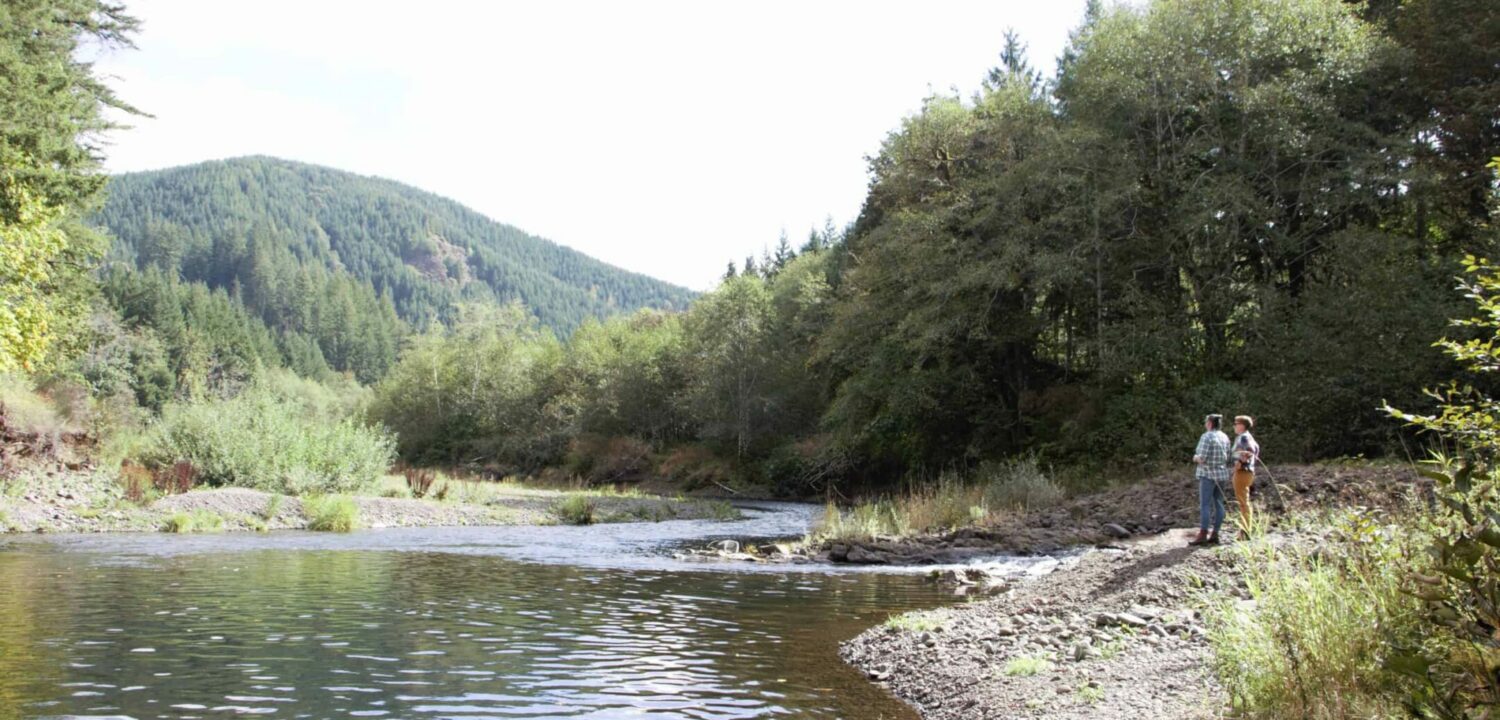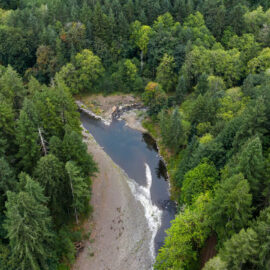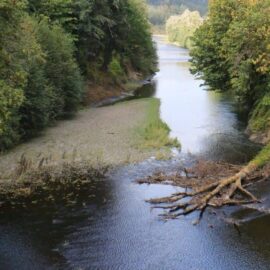The math behind a proposed Chehalis River dam just doesn’t add up. This spring, residents will have the opportunity to demand a better solution for people and fish.
A mile above the town of Pe Ell, Washington’s Chehalis River curves north around a wide, gravelly bend fed by fast-flowing Crim Creek. It’s a beautiful stretch of river—framed by firs and birches, with gentle riffles and cold pools teeming with juvenile steelhead. Chinook spawn here, too, and coho.
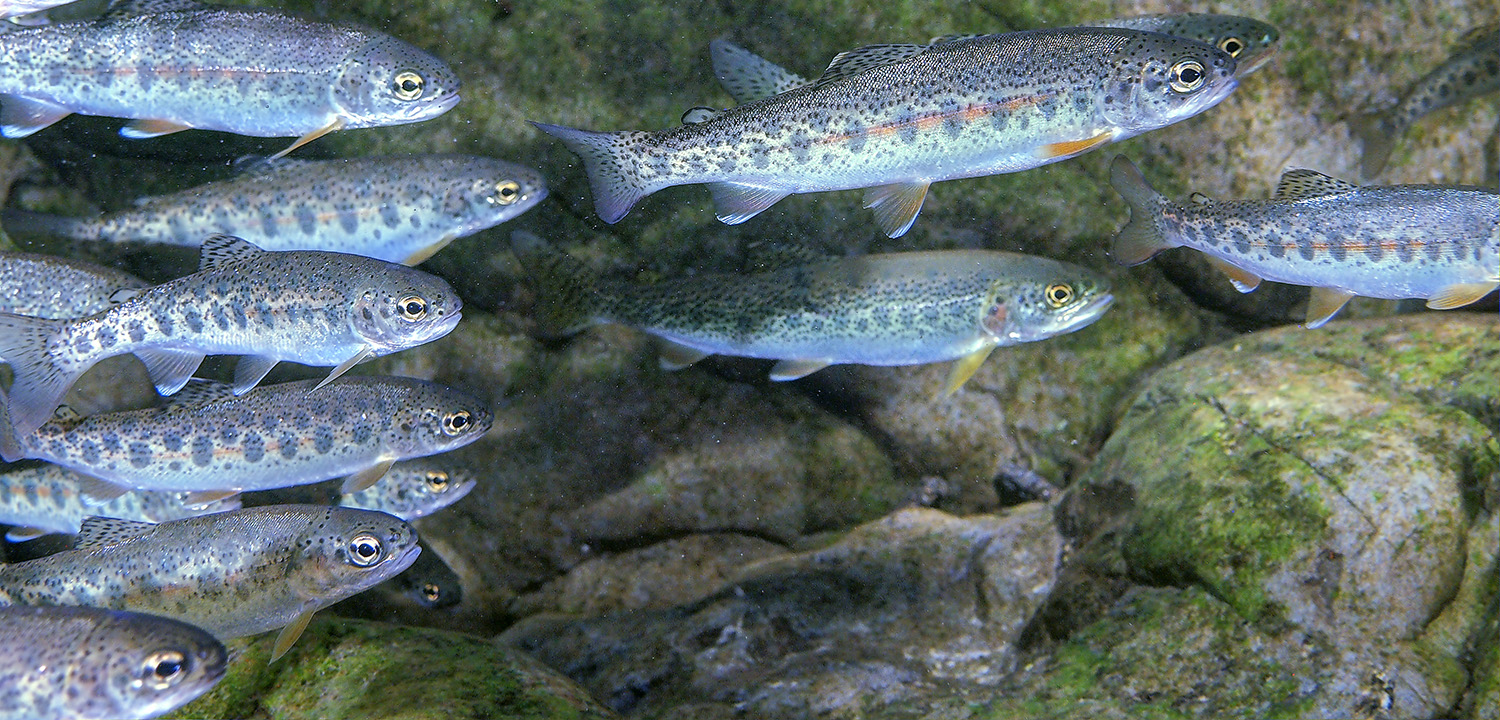
This is good salmon habitat, says Jess Helsley, WSC’s Washington Program Manager, despite the area’s history of logging and landslides. Fifteen percent of Chehalis Basin steelhead are produced within a couple miles of here, and the area is also of critical importance to spring Chinook. Even as wild salmon runs are in rapid decline across the Northwest, the Chehalis remains one of Washington’s most important salmon rivers.
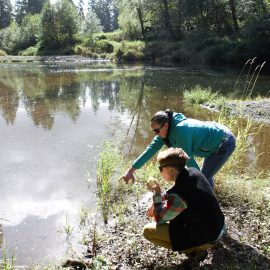
But if the state greenlights a massive dam project a quarter-mile downriver, this precious habitat will be repeatedly drowned in up to 254 feet of stagnant, oxygen-depleted flood water. From Crim Creek to Thrash Creek, juvenile trout and salmon be driven from typical rearing grounds by a temporary, six-mile-long reservoir. Downriver of the dam, incubating salmon eggs will be scoured by the dam’s high-volume flood water releases.
“We’re expecting the state to give a full accounting of these negative impacts,” Helsley says, referring to a forthcoming draft environmental impact statement on the dam from the Washington Department of Ecology. The draft EIS is scheduled to be released February 27, initiating a two-month public comment period.
The public comment period, which ends April 27, represents the first opportunity for residents to weigh in on a project that, Helsley says, “costs too much, does too little, and has too many negative impacts” for people and fish. The dam wouldn’t generate hydropower, or agriculture water supplies, or new fishing opportunities for residents. But it would pose a serious risk to the river’s vulnerable fish populations.
“There are smart, commonsense solutions for the Chehalis Basin’s flooding issues,” says Helsley. “But building this dam is like slapping on a band-aid. It won’t solve flooding issues. Indirectly, it could even make flooding worse for residents in the lower basin.”
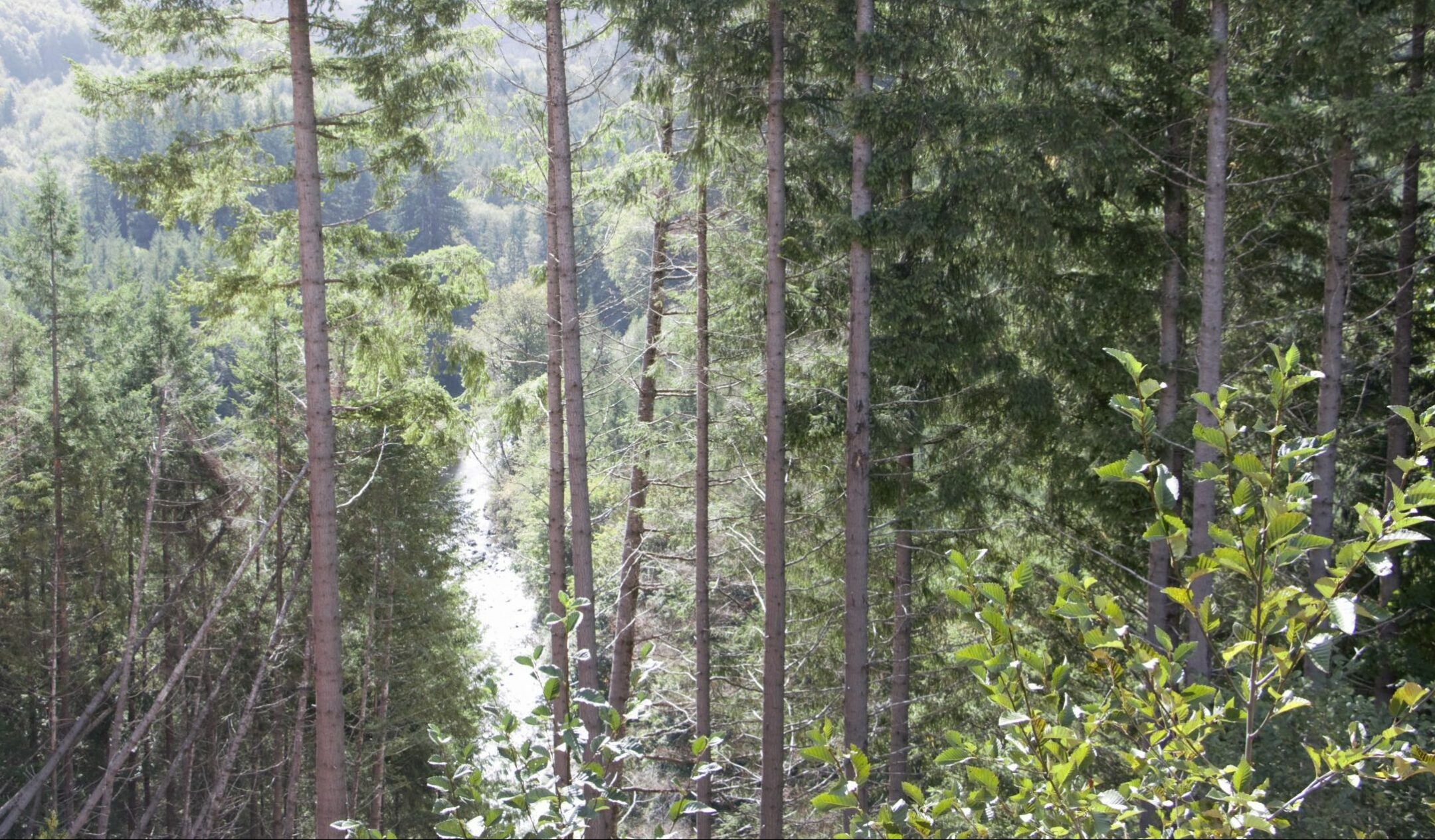
Helsley notes that the dam, as proposed by a team of Lewis County Commissioners, would soar 24 stories high and stretch the length of three football fields. That’s a lot of concrete—at a cost of somewhere between $625 million to $1 billion—for a project that only aims to reduce (not solve) flood problems. It could nonetheless give false reassurance to developers, Helsley says: encouraging yet more hardscaping and development in the floodplain, more “bricks in a bathtub.”
“There are smart, commonsense solutions for the Chehalis Basin’s flooding issues,” says Helsley. “But building this dam is like slapping on a band-aid.”
“There are thousands of at-risk structures in the Chehalis Basin floodplain,” Helsey says. “But the dam would only help 635 of them. That could work out to something like $1.5 million per structure.”
It’s money that Helsley says would be better spent on long-term flood solutions that factor in both climate change and human development—solutions like culvert removal, dechannelization, and restoring natural floodplain function in the Chehalis Basin.
“The Chehalis Basin needs a solution that actually works—for fish, and for all residents of the basin,” says Helsley. “The math behind a dam just doesn’t add up. And we need to make sure the state sees that.”
